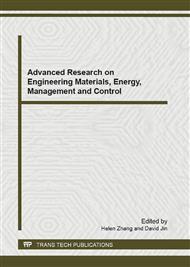p.281
p.285
p.290
p.295
p.299
p.304
p.309
p.314
p.318
Optimum Design of a Parabolic Flexure Hinge Based on Compliance Closed-Form Equations
Abstract:
Considering the increasingly wider applications of flexible hinge in the fields of micro-electromechanical and micro-positioning etc., the optimal design method of a parabolic flexible hinge is presented. According to the structure feature and force exerted on the flexible hinge, the closed-form flexibility expressions in the working and non-working plane can be derived by using the Castigliano’s second theorem. Meanwhile, the accuracy analysis of the parabolic flexure hinge is performed. The rotation angle of flexure hinge in the working plane is treated as objective function, and the constraints of optimization model are displacements in the non-working plane and one described the accuracy of hinge, such that the optimization model expressed performance requirements of flexure hinge can be established. Based on the optimization model, the optimization designs of parabolic flexure hinge are accomplished to acquire the optimized structural parameters. In conclusion, the study on the optimization design of the parabolic flexure hinge can provide a theoretical basis for its engineering applications
Info:
Periodical:
Pages:
299-303
Citation:
Online since:
January 2012
Authors:
Price:
Сopyright:
© 2012 Trans Tech Publications Ltd. All Rights Reserved
Share:
Citation:


